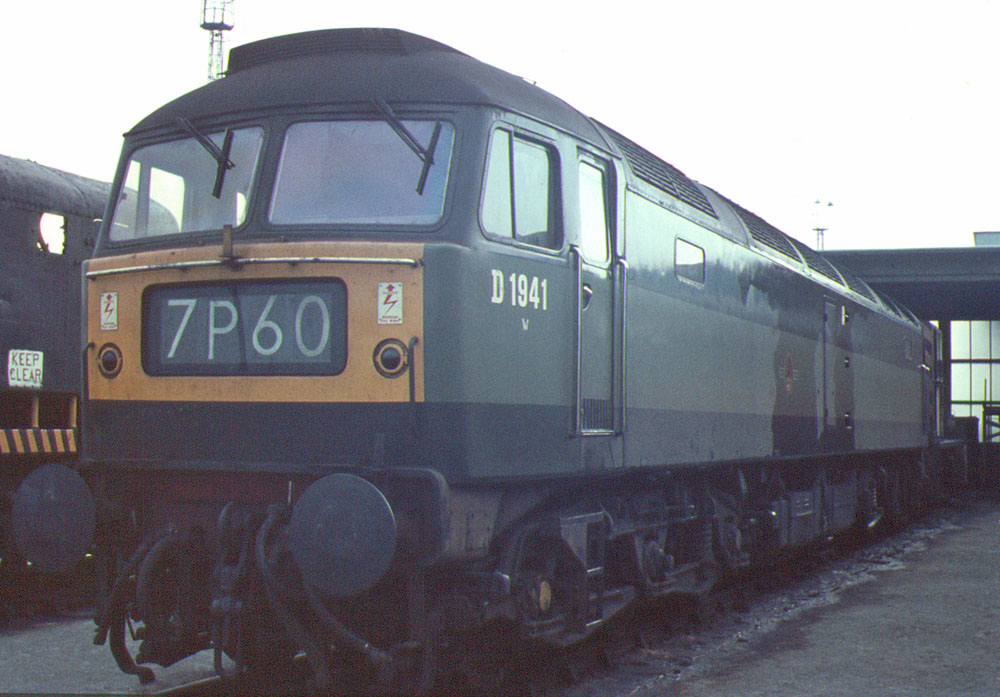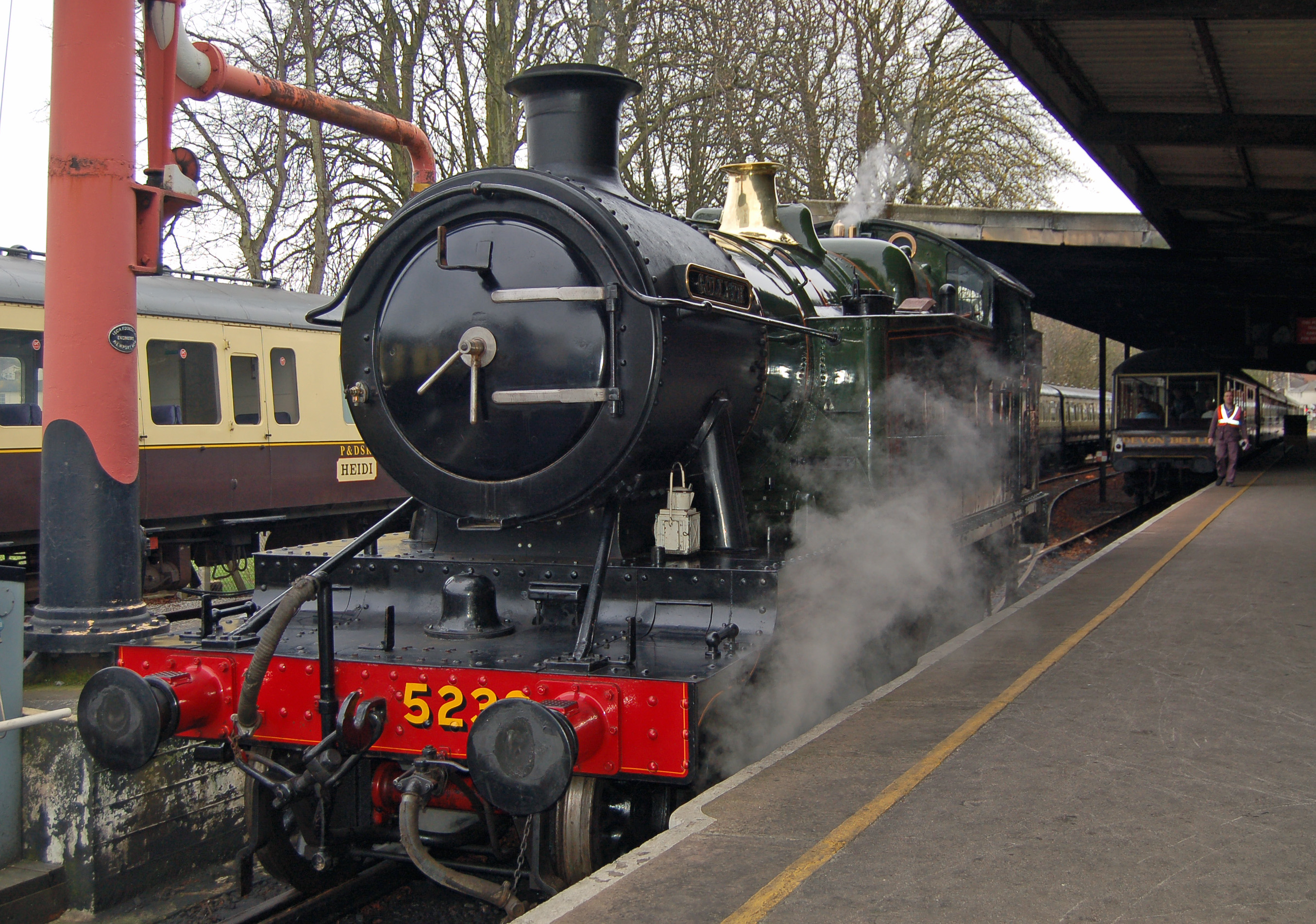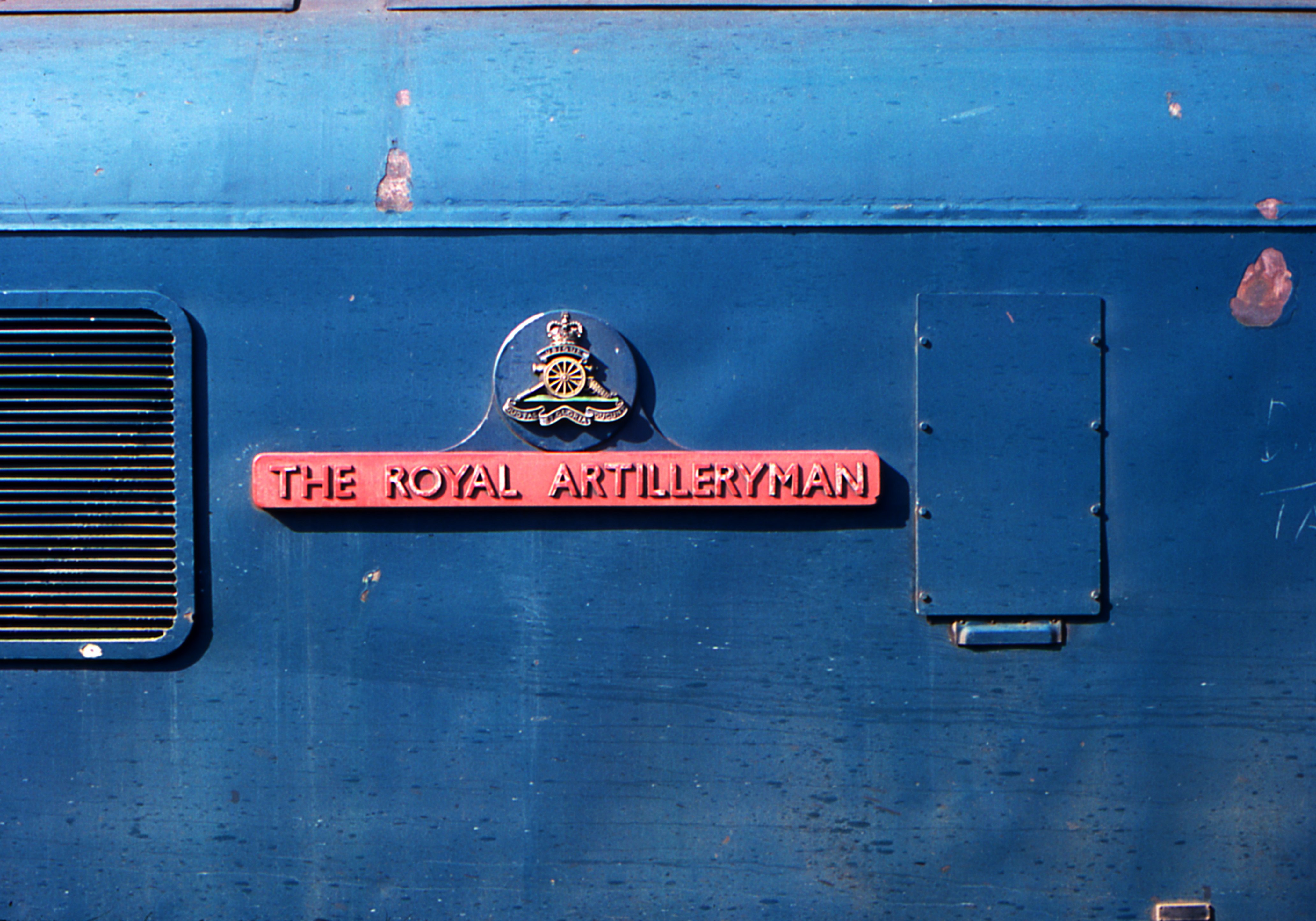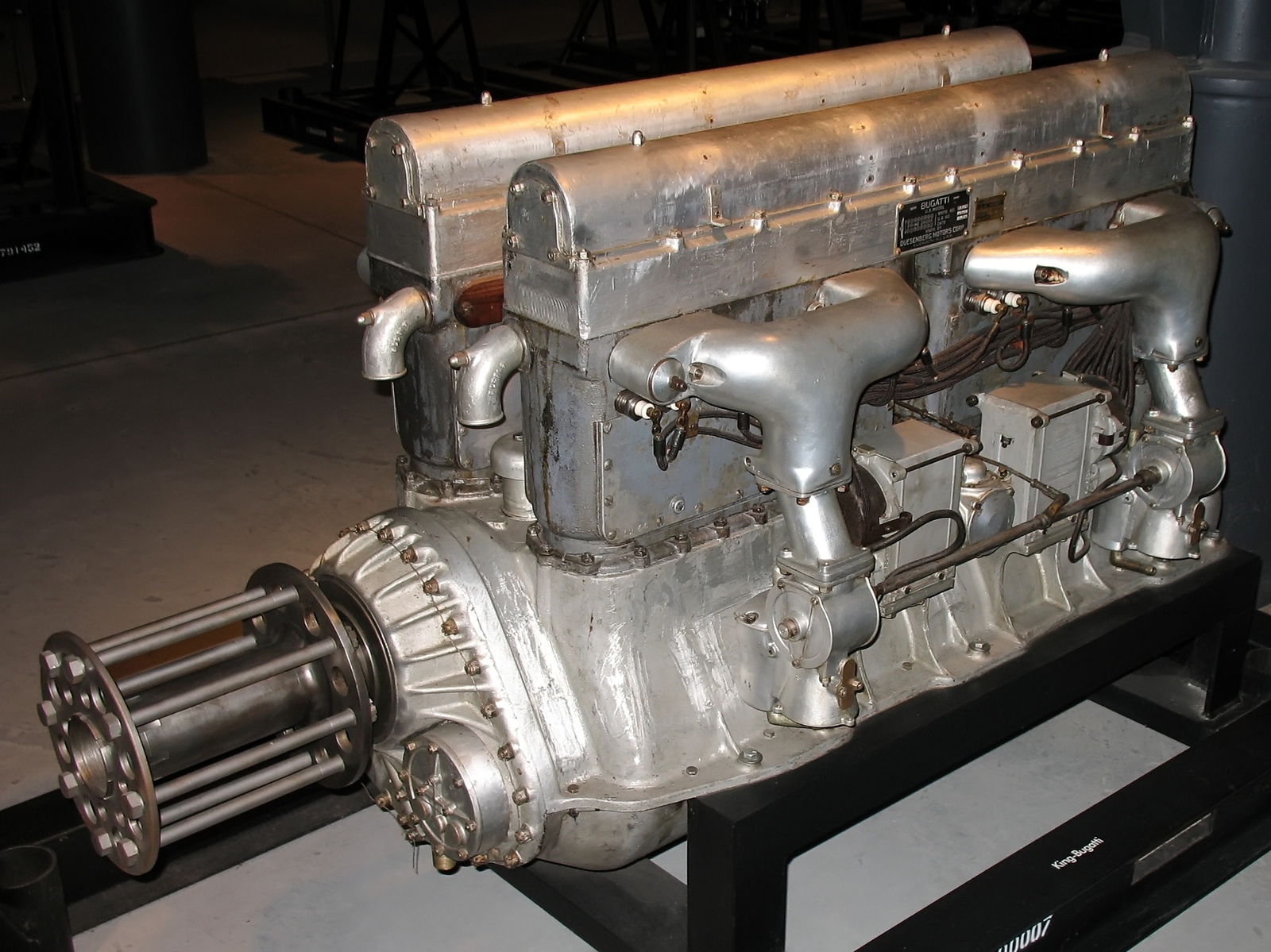|
British Rail D0260
D0260, named ''Lion'', was a prototype Type 4 mainline diesel-electric locomotive built in 1962 by a consortium of Birmingham Railway Carriage and Wagon Company, Sulzer (manufacturer), Sulzer the engine maker and Associated Electrical Industries, at BRCW's Smethwick works near Birmingham. The locomotive's number was derived from its works number, DEL260. Specification ''Lion'' was a Venture capital, private venture to meet a requirement from British Railways for a powerful locomotive of Co-Co wheel arrangement, as a substitute for the earlier 1Co-Co1 locomotives such as the ''Peak'' classes. The specifications were revealed by the British Transport Commission (BTC) at a meeting on 15 January 1960. Train heating was to be by both steam and electric train heating (ETH). Unlike the earlier Pilot Scheme, the BTC expected that these prototypes would be funded by the makers, rather than bulk orders being placed sight-unseen. For the Type 4, that gave rise to three prototypes: British R ... [...More Info...] [...Related Items...] OR: [Wikipedia] [Google] [Baidu] |
Birmingham Railway Carriage And Wagon Company
The Birmingham Railway Carriage and Wagon Company (BRC&W) was a railway locomotive and carriage builder, founded in Birmingham, England and, for most of its existence, located at nearby Smethwick, with the factory divided by the boundary between the two places. The company was established in 1854. Production BRC&W made not only carriages and wagons, but a range of vehicles, from aeroplanes and military gliders to buses, trolleybuses and tanks. Nevertheless, it is as a builder of railway rolling stock that the company is best remembered, exporting to most parts of the new and old worlds. It supplied vehicles to all four of the pre-nationalisation "big four" railway companies (London, Midland and Scottish Railway, LMS, Southern Railway (UK), SR, London and North Eastern Railway, LNER and Great Western Railway, GWR), British Rail, Pullman Company, Pullman (some of which are still in use) and Compagnie Internationale des Wagons-Lits, Wagons-Lits, plus overseas railways with diver ... [...More Info...] [...Related Items...] OR: [Wikipedia] [Google] [Baidu] |
British Rail Class 47
The British Rail Class 47 or Brush Type 4 is a class of diesel-electric locomotive that was developed in the 1960s by Brush Traction. A total of 512 Class 47s were built at Brush's Falcon Works in Loughborough and at British Railways' Crewe Works between 1962 and 1968, which made them the most numerous class of British mainline diesel locomotive. They were fitted with the Sulzer 12LDA28C twin-bank twelve-cylinder unit producing though this was later derated to to improve reliabilityand have been used on both passenger and freight trains on Britain's railways for over 55 years. Despite the introduction of more modern types of traction, a significant number are still in use, both on the mainline and on heritage railways. As of December 2021, 78 locomotives still exist as Class 47s, including 31 which have been preserved. 33 further locomotives were converted to Class 57s between 1998 and 2004. Origins The Class 47 history begins in the early 1960s with the stated aim of ... [...More Info...] [...Related Items...] OR: [Wikipedia] [Google] [Baidu] |
Fibreglass
Fiberglass (American English) or fibreglass (Commonwealth English) is a common type of fiber-reinforced plastic using glass fiber. The fibers may be randomly arranged, flattened into a sheet called a chopped strand mat, or woven into glass cloth. The plastic matrix may be a thermoset polymer matrix—most often based on thermosetting polymers such as epoxy, polyester resin, or vinyl ester resin—or a thermoplastic. Cheaper and more flexible than carbon fiber, it is stronger than many metals by weight, non-magnetic, non-conductive, transparent to electromagnetic radiation, can be molded into complex shapes, and is chemically inert under many circumstances. Applications include aircraft, boats, automobiles, bath tubs and enclosures, swimming pools, hot tubs, septic tanks, water tanks, roofing, pipes, cladding, orthopedic casts, surfboards, and external door skins. Other common names for fiberglass are glass-reinforced plastic (GRP), glass-fiber reinforced plastic (GFRP) or ... [...More Info...] [...Related Items...] OR: [Wikipedia] [Google] [Baidu] |
Steam Generator (railroad)
A steam generator is a type of boiler used to produce steam for climate control and potable water heating in railroad passenger cars. The output of a railroad steam generator is low pressure, saturated steam that is passed through a system of pipes and conduits throughout the length of the train. Steam generators were developed when diesel locomotives started to replace steam locomotives on passenger trains. In most cases, each passenger locomotive was fitted with a steam generator and a feedwater supply tank. The steam generator used some of the locomotive's diesel fuel supply for combustion. When a steam generator-equipped locomotive was not available for a run, a so-called "heating car" fitted with one or two steam generators was inserted between the last locomotive in the consist and the rest of the train. Steam generators would also be fitted to individual cars to enable them to be heated independently of any locomotive supply. In Ireland, Córas Iompair Éireann used "heat ... [...More Info...] [...Related Items...] OR: [Wikipedia] [Google] [Baidu] |
Vierendeel Truss
A truss is an assembly of ''members'' such as beams, connected by ''nodes'', that creates a rigid structure. In engineering, a truss is a structure that "consists of two-force members only, where the members are organized so that the assemblage as a whole behaves as a single object". A "two-force member" is a structural component where force is applied to only two points. Although this rigorous definition allows the members to have any shape connected in any stable configuration, trusses typically comprise five or more triangular units constructed with straight members whose ends are connected at joints referred to as '' nodes''. In this typical context, external forces and reactions to those forces are considered to act only at the nodes and result in forces in the members that are either tensile or compressive. For straight members, moments ( torques) are explicitly excluded because, and only because, all the joints in a truss are treated as revolutes, as is necessary f ... [...More Info...] [...Related Items...] OR: [Wikipedia] [Google] [Baidu] |
Pratt Truss
A truss bridge is a bridge whose load-bearing superstructure is composed of a truss, a structure of connected elements, usually forming triangular units. The connected elements (typically straight) may be stressed from tension, compression, or sometimes both in response to dynamic loads. The basic types of truss bridges shown in this article have simple designs which could be easily analyzed by 19th and early 20th-century engineers. A truss bridge is economical to construct because it uses materials efficiently. Design The nature of a truss allows the analysis of its structure using a few assumptions and the application of Newton's laws of motion according to the branch of physics known as statics. For purposes of analysis, trusses are assumed to be pin jointed where the straight components meet, meaning that taken alone, every joint on the structure is functionally considered to be a flexible joint as opposed to a rigid joint with strength to maintain its own shape, and th ... [...More Info...] [...Related Items...] OR: [Wikipedia] [Google] [Baidu] |
Cant (road/rail)
The cant of a railway track or camber of a road (also referred to as superelevation, cross slope or cross fall) is the rate of change in elevation (height) between the two rails or edges. This is normally greater where the railway or road is curved; raising the outer rail or the outer edge of the road creates a banked turn, thus allowing vehicles to maneuver through the curve at higher speeds than would otherwise be possible were the surface flat or level. Rail On railways, cant helps a train steer around a curve, keeping the wheel flanges from touching the rails, minimizing friction, wear and rail squeal. The main functions of cant are the following: * Improve distribution of the load across both rails * Reduce wear on rails and wheels * Neutralize the effect of lateral forces * Improve passenger comfort The necessary cant in a curve depends on the expected speed of the trains and the radius. However, it may be necessary to select a compromise value at design time, for ... [...More Info...] [...Related Items...] OR: [Wikipedia] [Google] [Baidu] |
Truss
A truss is an assembly of ''members'' such as beams, connected by ''nodes'', that creates a rigid structure. In engineering, a truss is a structure that "consists of two-force members only, where the members are organized so that the assemblage as a whole behaves as a single object". A "two-force member" is a structural component where force is applied to only two points. Although this rigorous definition allows the members to have any shape connected in any stable configuration, trusses typically comprise five or more triangular units constructed with straight members whose ends are connected at joints referred to as ''nodes''. In this typical context, external forces and reactions to those forces are considered to act only at the nodes and result in forces in the members that are either tensile or compressive. For straight members, moments (torques) are explicitly excluded because, and only because, all the joints in a truss are treated as revolutes, as is necessary for ... [...More Info...] [...Related Items...] OR: [Wikipedia] [Google] [Baidu] |
BR Class 45
The British Rail Class 45 or Sulzer Type 4 are diesel locomotives built by British Railways' Derby and Crewe Works between 1960 and 1962. Along with the similar Class 44 and 46 locomotives, they became known as ''Peaks''. History The Class 45s became the main traction on the Midland Main Line from 1962, and their introduction allowed considerable acceleration of the previous steam-powered service. The Class 45s remained the main source of power on the Midland Main Line up to 1982, when they were relegated to secondary services following introduction of HSTs on the route. From 1986 Class 45s virtually disappeared from the line. From the early 1980s until their withdrawal c.1988, the class were regular performers on the North Trans-Pennine line working services from Liverpool Lime Street to York, Scarborough or Newcastle via Manchester Victoria, Huddersfield and Leeds. These trains were usually formed of early Mark 2 carriages, of up to seven in a typical train. Nam ... [...More Info...] [...Related Items...] OR: [Wikipedia] [Google] [Baidu] |
History Of Sulzer Diesel Engines
This article covers the History of Sulzer diesel engines from 1898 to 1997. Sulzer Brothers foundry was established in Winterthur, Switzerland, in 1834 by Johann Jakob Sulzer-Neuffert and his two sons, Johann Jakob and Salomon. Products included cast iron, firefighting pumps and textile machinery. Rudolf Diesel was educated in Augsburg and Munich and his works training was with Sulzer, and his later co-operation with Sulzer led to the construction of the first Sulzer diesel engine in 1898. In 2015, the Sulzer company lives on but it no longer manufactures diesel engines, having sold the diesel engine business to Wärtsilä in 1997. Overview Sulzer built diesel engines for stationary, road, rail and marine use. The engine types usually comprise a number, then some letters, then another number. For example, 6LDA28 indicates a six-cylinder engine in the "LDA" series with a 28 cm cylinder bore. Road In 1937, Sulzer introduced an opposed piston two-stroke diesel engine for r ... [...More Info...] [...Related Items...] OR: [Wikipedia] [Google] [Baidu] |
U Engine
A U engine is a piston engine made up of two separate straight engines (complete with separate crankshafts) placed side-by-side and coupled to a shared output shaft. When viewed from the front, the engine block resembles the letter "U". Although much less common than the similar V engine design, several U engines were produced from 1915-1987 for use in airplanes, racing cars, racing and road motorcycles, locomotives, and tanks. Design The main benefit of a U engine layout is the ability to share common parts with straight engine upon which is it based. Additionally, if the two crankshafts rotate in opposite directions, the gyroscopic effect of the rotating components in each cylinder bank cancel each other out. However, a V engine is typically more compact and lighter than a U engine (in part due to the lack of a second crankshaft), therefore V engines are far more common than U engines. The H engine layout uses a similar concept to U engines, whereby two flat engines are s ... [...More Info...] [...Related Items...] OR: [Wikipedia] [Google] [Baidu] |
.jpg)








